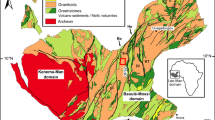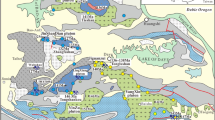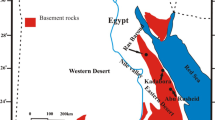Summary
The Separation Lake area is host to the most important rare-element pegmatites in Ontario, Canada. They include the Big Whopper and Big Mack petalite pegmatite systems which potentially represent the world's second largest lithium deposit of this type. The pegmatites occur in two distinct clusters adjacent to the Separation Rapids pluton which is thought to be the source of the rare-elements. Beryl-type and complex-, petalite-subtype pegmatites are the most common and a few pegmatites have characteristics similar to the lepidolite-subtype. This study reveals that columbite-tantalite in the pegmatites has an extremely wide range of composition from primitive ferrocolumbite to evolved, almost end-member manganotantalite. Evidence is provided that melt evolution resulted in increased fluorine activity (as seen in microlite compositions) and that in situ fractionation of magma within individual pegmatites often led to the crystallization of rare-element-enriched, Li mica-fluorapatite-cleavelandite pods. Zonation patterns seen in backscattered electron images show primary compositions of columbite-tantalite were modified by secondary processes related to extreme fractionation and involving the late stage development of albitic units in individual pegmatites. This alteration led to recrystallization of columbite-tantalite and produced compositions with lower Ta contents, but with little change in Mn content.
Zusammenfassung
Die wichtigsten Seltene-Element-Pegmatite von Ontario liegen im Gebiet des Separation Lake. Sie umfassen die Petalit-Pegmatit-Systeme von Big Whopper und Big Mack, potentiell die weltweit zweitgrößte Lithiumlagerstätte dieses Typs. Die Pegmatite treten in zwei Gangsystemen in der Nähe des Separation Rapids Plutons auf, der die Quelle der seltenen Elemente sein dürfte. Am weitesten verbreitet sind Beryll-Pegmatite, sowie komplexe Pegmatite des Petalit-Subtyps und, untergeordnet, Pegmatite die Ähnlichkeiten mit dem Lepidolith-Subtyp zeigen. Columbite-Tantalite zeigen ein weites Spektrum von Zusammensetzungen, von primitivem Ferrocolumbit fast bis zu dem Endglied, Manganotantalit. Die Evolution der Schmelzen führte zu erhöhter Fluor-Aktivität (erkennbar an den Zusammensetzungen des Mikroliths). An seltenen Elementen angereicherte Nester mit Lithium-Glimmer, Fluorapatit und Cleavelandit gehen auf in-situ Fraktionierung von Magma in einzelnen Pegmatiten zurück. BSE-Bilder zeigen Zonierungs-Muster mit primären Zusammensetzungen von Columbit-Tantalit, die durch sekundäre Prozesse verändert wurden. Letztere stehen mit extremer Fraktionierung in Zusammenhang und mit der späten Entstehung albitischer Bereiche in einzelnen Pegmatiten. Diese Umwandlung führte zur Rekristallisation von Columbit-Tantalit und zu niedrigeren Ta-Gehalten, bei gleichbleibendem Mn.
Similar content being viewed by others
Author information
Authors and Affiliations
Additional information
Received April 30, 1999; revised version accepted February 14, 2000
Rights and permissions
About this article
Cite this article
Tindle, A., Breaks, F. Columbite-tantalite mineral chemistry from rare-element granitic pegmatites: Separation Lakeh area, N.W. Ontario, Canada. Mineralogy and Petrology 70, 165–198 (2000). https://doi.org/10.1007/s007100070002
Issue Date:
DOI: https://doi.org/10.1007/s007100070002




